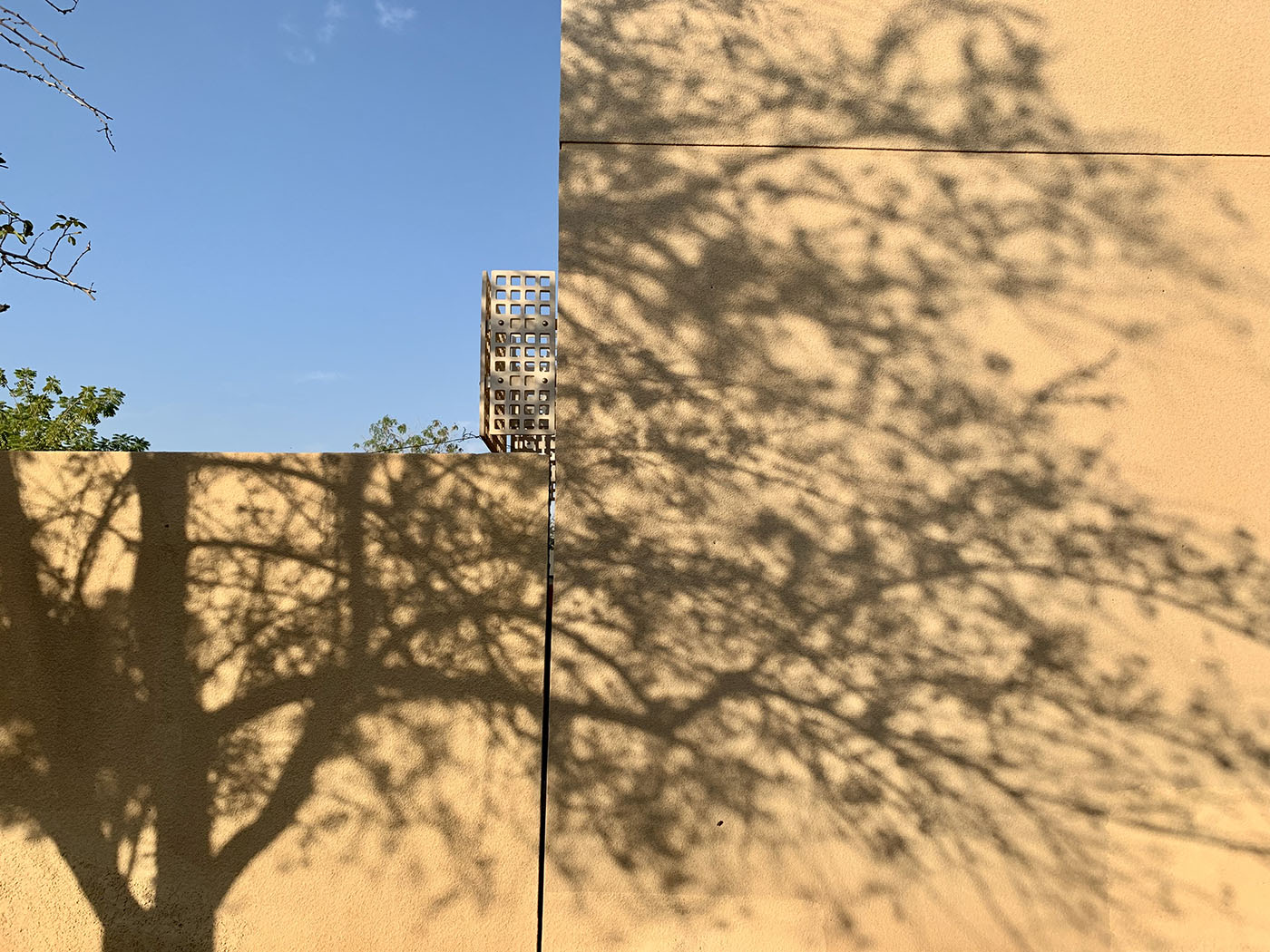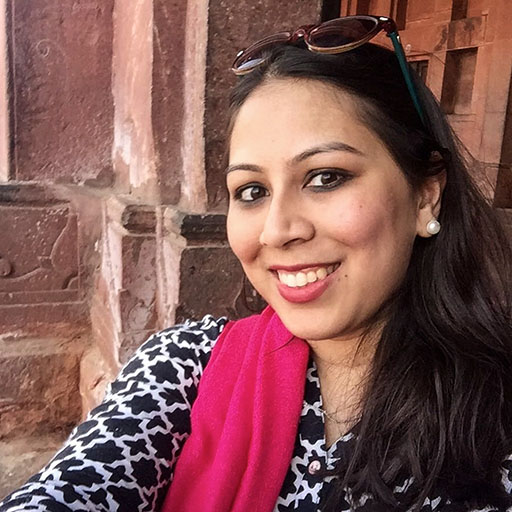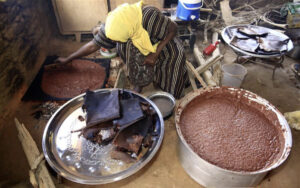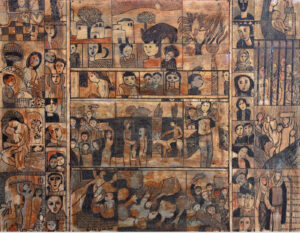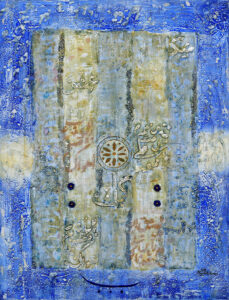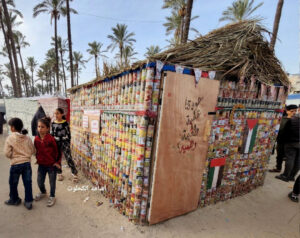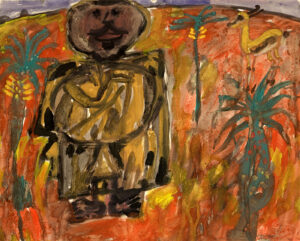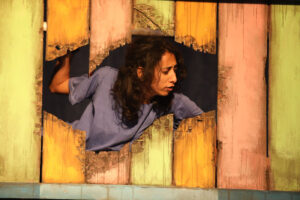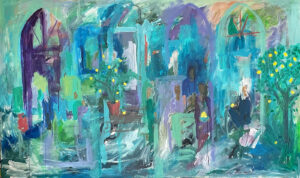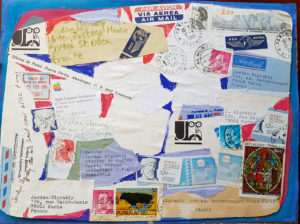For those who have left it, the city of childhood and adolescence becomes a mythical place. —Elias Canetti
Priyanka Sacheti
Every night, that same dream of that same house: a sand-colored cuboid, framed by a waterfalling fuchsia bougainvillea and a sky-embracing neem tree. At one end of the street lies the sun: at the other end, a tributary of more streets. This is the house that I will always call home, this is the land that will always be home.
When I was 18 years old, I moved to the United Kingdom to pursue my undergraduate studies. It was the first time I had ever left home and my family; it was also the first time I understood what it truly meant to be homesick. Up till then, I had considered myself a part of the global Indian diaspora, having lived in the Sultanate of Oman since I was five years old; I saw myself as Indian, with India as my home. In the context of Oman, I was just an expatriate, living in the land yet not belonging to it. However, during those initial months of searing homesickness in the UK, all these labels ceased to matter. All I knew then was that I yearned for home — and I began to acknowledge which one it precisely was: Oman.
In the shapelessness that was my homesickness, I did not consider that I was housesick as much as I was homesick: I was specifically yearning for the house that had been my safe harbor in Oman for the past many years and that I had tearfully bid adieu to on the night I flew to London, almost feeling as if I would never see it again. In the Netherlands of the 17th century, newly married brides often received wedding gifts of miniature cabinet dollhouses mirroring their family homes to soothe their homesickness. I did not have a dollhouse miniature of my house, but I could reconstruct it through my words; and so, during the worst bouts of homesickness, I found myself drawing a literary portrait of my house, the first of the many times I would turn to words to assuage my home-yearnings.
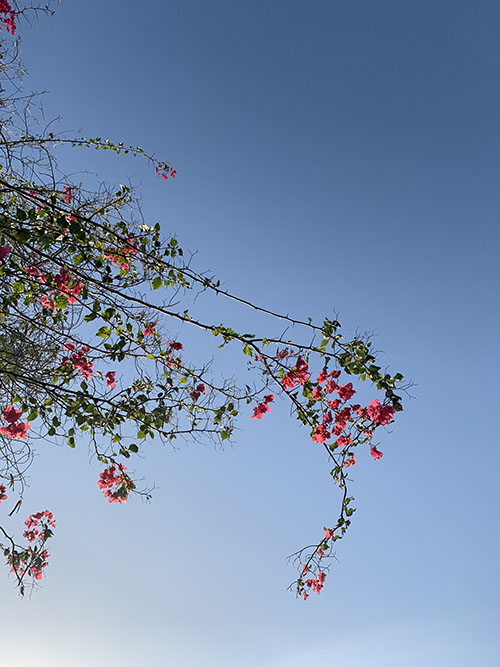
Yet while the homesick Dutch bride merely had to glance at her natal home, replicated in painstaking detail, I had to rely on my memories. I realized there was much that I could not remember of my house, despite its being the space I had most intimately known and existed within all these years. Yes, the house was sand-colored: but which shade exactly? Was the neem tree the only tree growing outside? How many steps did it take to climb from downstairs to upstairs? I had lived in the house for years but there was still so much to learn about it. During subsequent visits, I found myself paying minute attention to the house, squirreling away details which would later provide me with comfort when I most needed it. In the landscape of my memories, the house had become a shrine, and the act of observing and noticing it verged on devotion.
I am ten years old and standing in the front yard, where my botanist mother has created a huge garden. Every evening, once the fierce heat dissipates, she lovingly waters the many plants she has planted inside the pots and planters. One particularly warm summer evening, she finds to her surprise that a street cat has chosen one of the large planters to give birth to a litter of kittens; they stay there for a few days before the mother finds another home for them, but until then, they are a source of delight.
What is the difference between a house and a home? What makes a house a home? In my quest to recreate my home, I had become so fixated on its body, so to speak, that I had entirely lost sight of what was contained within it, the stuff that made it home: memories.
When my parents moved from India to Oman in the late 1980s, to continue their academic careers at Sultan Qaboos University (the country’s national campus), they did not know for how long they would live in the country. Befitting the impermanent, unpredictable nature of expatriate living, they simply lived there from one year to another, little guessing that those individual years would eventually merge into 30-odd ones. Given that we lived on campus, the university had allocated them a house out of hundreds of similar others. There was little variation in the appearance of the houses’ structure and layout. They differed from one another only by their colors, which were drawn from a graduated palette of browns: sand, gravel, sienna, and caramel, presumably to merge with the surrounding landscape of gravel desert, wadi plains, hills, and the distant mountains.
This physical landscape would become my first and favorite playground, offering endless possibilities of joy and discovery: hide and seek or running around with neighborhood friends or exploring, during which I took solitary expeditions to collect rocks, bird-watch, or delight in the ephemeral plants greening the desert following occasional rains. During weekends in the cooler winter months, my family along with other Indian ones would take day trips to the nearby wadis and beaches, immersing ourselves in the country’s abundant spectacular natural beauty, towards which we eventually became blasé. It is this landscape that is the first thing that I now associate with Oman and that I miss the most about the country.
My house was an integral part of this landscape, having seen me grow over the years, first as a school-going child and adolescent, then as a young adult pursuing a freelance writing career, and after I moved away from Oman, an annual migratory bird returning to its nest. Here was the gate through which we had entered the house for the first time on a March afternoon, my younger brother and I small children, still holding onto our parents’ hands. Here was the yard that I would burst into after a long day at school, after playing in the streets or the hills, or returning from vacations to India, relieved at knowing I was home at last. Here was the doorway through which we had welcomed many visitors for the first time, including my future husband. Here were the stairs that I once took three at a time when I was fifteen years old, ending up tearing a foot ligament. Here was the foyer, where sat the landline for the longest time, where we made and received phone calls within Oman, and on rare occasions, India and abroad, the latter always hurried affairs, aware as we were of the expensive rates per minute, our hearts accelerating if the calls arrived at odd hours of the day. Here was the kitchen, where we ate the countless meals my mother prepared, feeding us food that reminded her of home, where I made my first tentative foray into cooking, learning to roll misshapen rotis and cook inauthentic pasta, where the cupboards contained each family member’s favorite cereal. Here was the space where we had argued and celebrated and hosted guests and lived the only lives that we children had ever known.
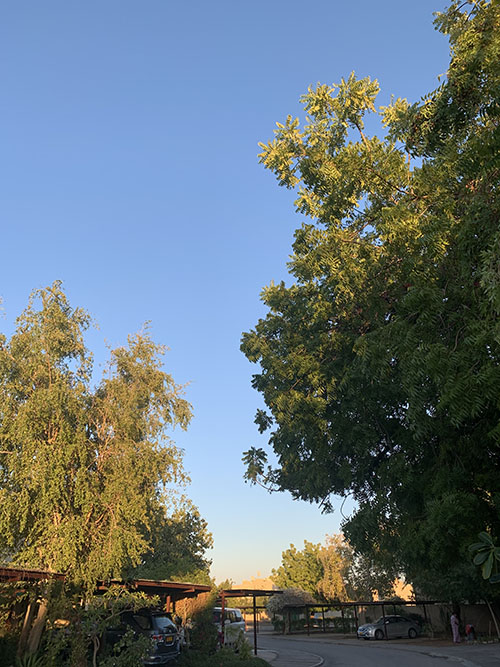
The house also represented for me what I now realize was a liminal space. As part of an expatriate community and studying in an international school, I had a curiously remote relationship with Oman. I was familiar with the landscape as if it were the back of my hand, but I did not interact much with Omanis — at least during my childhood, what with my school not permitting Omanis to study there and my having little opportunity to meet them elsewhere. Given my expatriate status, I always took for granted my time in Oman as an inevitably temporary chapter, never even considering acquiring citizenship,[1] on par with many people’s Arabian Gulf diaspora experience. Over the years, as I saw fellow expatriate friends and acquaintances leave Oman, whether to pursue their studies or careers elsewhere or to settle in their home countries, I knew that I too would join their ranks one day. This notion of temporariness subsequently also translated into a disinclination towards assimilating into the country’s culture and national community, as well as my not even learning Arabic for all the years I lived there — a regret that haunts me till this day.
My relationship with Oman was therefore forged with the place more than anything else; and so, in the midst of all that temporariness, the house was the one solid constant and certainty. It also functioned as the threshold between the life that I led in school and beyond, and that of my Indian roots and culture nestling inside the house. I considered myself Indian, yes, but the older I grew, the more I began to wonder if I was Indian enough even as I accepted that I could never be Omani. I did not realize then that one could simultaneously inhabit multiple identities. What I did know was that the confounding journey of adolescence I was already on further complicated my identity ambiguity. In those bewildering years, during which I inhabited so many limbos, places where I often felt isolated and unable to relate to my peers, the house became more of a sanctuary than ever, especially my room, which was perhaps the only place where I could truly be as I wished to be: in other words, the sum of many identities. It was there that I found myself unconsciously exploring and expressing my aspirations in the form of writing and art.
One annual occasion that memorably stands out was when my family celebrated Diwali, the Hindu festival of lights. We always hosted an open house, inviting friends and colleagues of different faiths, cultures, and countries to our home to share in the celebration, the party lasting late into the night. On Diwali day, I would spend the afternoon following the end of school creating rangoli art in the front yard, helping my parents set out tea lights and candles at dusk, and arranging the dining table — already heavily laden with sweets and savories — before changing into traditional festive Indian wear. Our brightly illuminated house would always stand out on our street on Diwali nights, laughter and conversation spilling out beyond the threshold and onto the sidewalk, my otherwise two seemingly disparate worlds merging for once. Even now, after having celebrated Diwali in my own house for years, I still associate the festival with those joyous open-houses of my childhood.
After moving out of the house and returning only for annual visits, I began to dread this inescapable reality: my parents would ultimately leave Oman one day and, in doing so, would have to relinquish the house. For all the years they lived in Oman, they always knew there would come the day when they would bid farewell to the country that had so fundamentally shaped their lives as well as those of their children. It is difficult enough to divest a house of its belongings, but how do you pack up its memories?
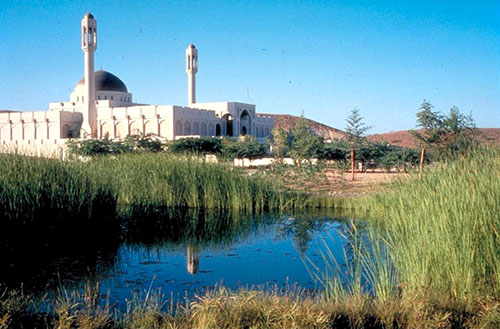
For me, the farewell would painfully embody the loss of that one place where I would forever be a child, in whose walls I had found security, safety, warmth, and comfort. The closer we got to the day when my parents would finally leave Oman, the more I found myself cherishing each return visit; during those visits, I fervently sought to preserve the house within the coordinates of my memory. I took hundreds of photographs of it on my phone, documenting the minutiae that made this house home for me. However, even if I could perfectly preserve the physical house in images, I could never translate into pixels all the thousands of memories that the house contained.
On those trips back from the UK, it saddened me to think that after my parents had left and when I returned to Oman in the future, I would not be able to return to this house — or specifically, the home that we had made of it. A stranger by then would have inhabited the house and his or her presence would have rendered it their home, excising all those years we had spent there and by extension, the memories contained within its walls. Yet when the dreaded moment of farewell finally arrived, I still found it impossible to believe that I would never ever return to my home. And in my mind today, it still patiently stands there, waiting for my footsteps to say that I am here again, the memories waiting to be revived, like a germinating seed buried in the depths of the desert anticipating the arrival of rain.
Home is the place where, when you have to go there, they have to take you. —Robert Frost, from his poem The Death of a Hired Man
I think of those who can always return to their childhood homes, innocent in their arrogant expectation that the home will always stand there unaltered, that the contours of their room will remain comfortingly unchanged, the sunlight falling upon the same spot every day. Those returning to their childhood houses do so with the confidence that neither the physical house nor the memories contained within it would have changed. I similarly envy those who have lived in the same city since their birth and grown along with it, those for whom the streets are thickly lined with memories and ghosts of the people they once were. Those streets know them as well as they know the streets: there are no strangers in this midst.
My parents finally bid adieu to the house in October 2020 — and it now exists only as an abstraction for me. I continue to yearn for it, especially when I am feeling physically unwell or grappling with mental health challenges. The physical house recedes into the background during those times, supplanted by my idea of it as the ultimate safe space. During the worst of my anxiety, I close my eyes and retreat to my room in the house, immersed in a child’s oblivion to the world’s harsh realities. Upon contracting Covid in April 2021 and having to spend six days in the hospital, I did not think of my home in Bangalore, India, where I had been living for the past several years. Instead, I thought incessantly of my bed in Oman, that bed becoming an island of safety and peace amid the tumultuous seas surrounding me. In recent times, whenever I am experiencing a period of great change or tumult in my life, I dream of my house more often than ever, my mind instinctively turning to what it perceives as the spelling of security in my psychological lexicon.

Due to the pandemic and various logistical reasons, I have been unable to return to Oman for over three years now. Given that so many people I knew there have also left, what I pine for, more than anything else, is the country: the mountains, beaches, hills, and the wadi plains, the streets and markets, the neighborhoods, and above all, the house, whose memories suddenly and randomly pierce my mind, filling me with bittersweet yearning. I wonder if the streets have forgotten me entirely, accustomed as they are to the constant arrival and departure of those who inhabited the land; I may be a ghost haunting the land but perhaps it is entirely oblivious to my phantom presence. I think of the day when I will eventually return, both anticipating the occasion and dreading how much would have radically changed in the intervening years. What familiar parts of it will I recognize as one does their reflection in the mirror? How much of the land will have become a stranger to me, just as I believe my house will have inevitably done?
Perhaps the solution to this predicament would be simply to not return, to let my home exist solely in my imagination as the place I remember and cherish, as opposed to what it has now become. Yet this I cannot do: I am aware that I have the luxury of returning, a great privilege that so many others do not and will never have when it comes to their former homes. And even if the land will initially appear to be a stranger, even if the house looks blankly at me, feigning amnesia of who I am, I will still return because they are both the only places I will ever truly consider home. Perhaps, for a while, the house and the neem tree and the rocks and the sea will struggle to place my face, perhaps even stumble over my name. But once we begin to talk, they will remember, I know — and that will be enough for me. And what more could one ask for? To be taken in, not a stranger, but a woman who belongs.
[1] Those applying for Omani citizenship need to meet a stringent list of requirements; many expatriates who do choose to remain in Oman post-retirement may be given a long-term residency visa, contingent on their fulfilling certain conditions.



